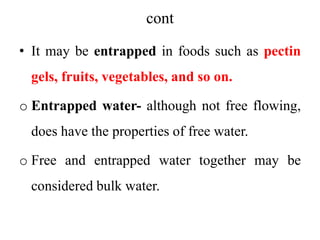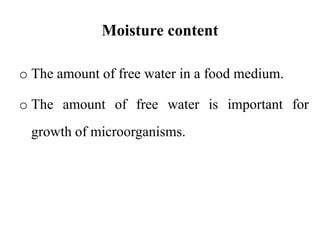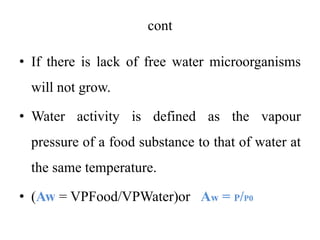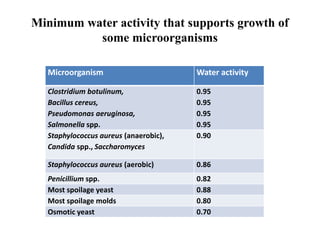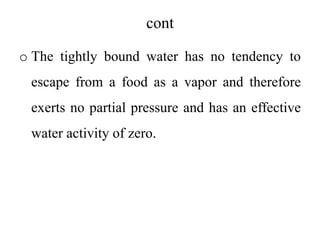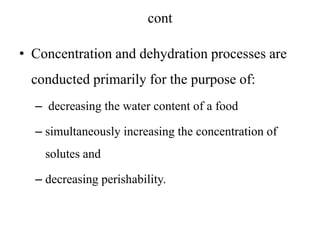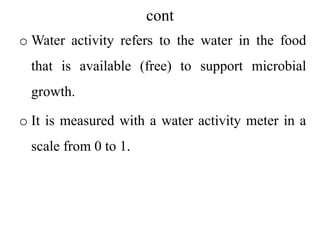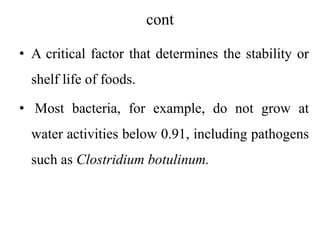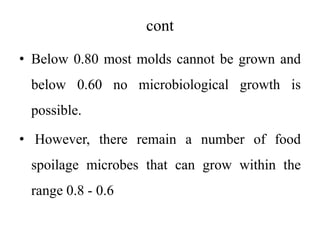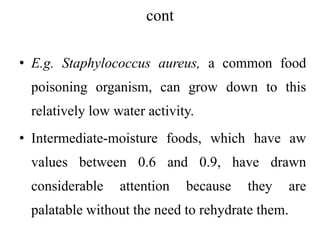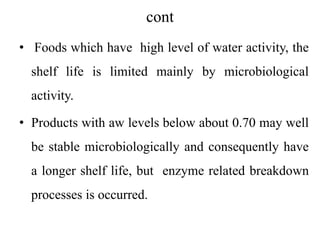Factors affecting microbial growth in food can be intrinsic, related to characteristics of the food itself, or extrinsic, related to external environmental conditions. Intrinsic factors include pH, water activity, nutrients, and antimicrobial contents. pH and water activity are especially important as most bacteria grow between pH 6.8-7.5 and require a minimum water activity of 0.91. Controlling the pH and water activity of foods through methods like fermentation, addition of acids or salts, and moisture reduction can inhibit microbial growth and improve food stability.


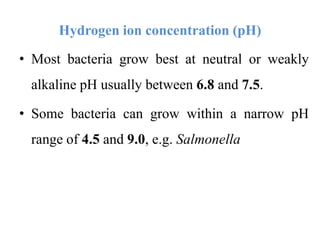


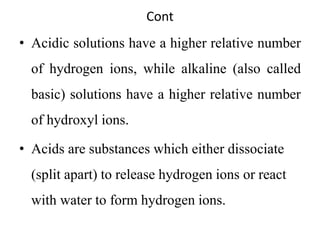
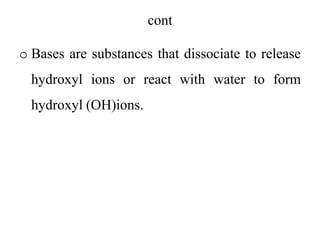



![cont
o The pH is a function of the hydrogen ion
concentration in the food:
i.e. pH = -log10 [H+]](https://image.slidesharecdn.com/phandaw-191204100509/85/Ph-and-aw-11-320.jpg)







